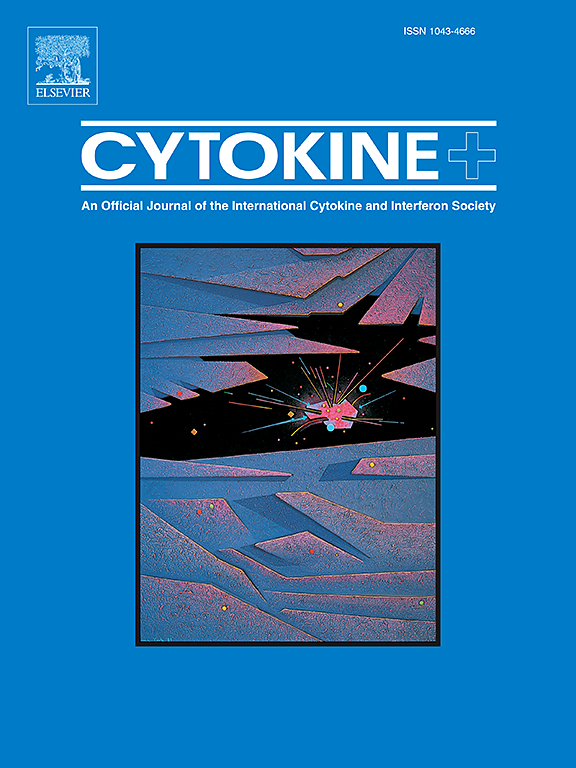The role of cellular senescence in the pathogenesis of Rheumatoid Arthritis: Focus on IL-6 as a target gene
IF 3.7
3区 医学
Q2 BIOCHEMISTRY & MOLECULAR BIOLOGY
引用次数: 0
Abstract
Background
Rheumatoid arthritis is a chronic autoimmune disease. However, the specific role of senescence in rheumatoid arthritis (RA) is unknown. This study aimed to identify potential aging-related genes that have diagnostic and therapeutic value for RA.
Methods
The GSE89408 dataset was downloaded from the Gene Expression Omnibus (GEO). Aging-related genes were downloaded from the HAGR database. Differentially expressed genes (DEGs) were subsequently identified with the “edgeR” tool. Next, hub genes were identified with a PPI network and CytoHubba analysis. Receiver operating characteristic (ROC) curves were used to evaluate the diagnostic value of these hub genes. Immune infiltration analysis was performed with the CIBERSORT algorithm. Additionally, molecular docking was performed with CB-Dock2. Finally, correlation experiments were performed to validate the bioinformatics and molecular docking results.
Results
A total of 22 ADEGs were identified. Combined PPI network and CytoHubba analyses identified a total of 7 hub genes, including IL-6, IL7R, IL2RG, CDK1, PTGS2, and LEP, which are associated mainly with inflammation and immune responses. ROC analysis revealed that the hub genes were highly predictive of RA. Analysis of immune infiltration revealed that the 6 hub genes were positively associated with M1 macrophages. Validation experiments revealed that the inhibition of IL-6 significantly decreased the degree of synovial fibroblast (FLS) senescence. Furthermore, molecular docking and validation experiments revealed that IL-6 is a potential target for drug therapy.
Conclusion
This study demonstrated that RA-FLS senescence may promote the development of RA via inflammatory and immune mechanisms. Seven hub genes were identified, of which IL-6 is a reliable biomarker for the diagnosis and treatment of RA.
细胞衰老在类风湿关节炎发病机制中的作用:关注作为靶基因的 IL-6
背景类风湿性关节炎是一种慢性自身免疫性疾病。然而,衰老在类风湿性关节炎(RA)中的具体作用尚不清楚。本研究旨在鉴定对类风湿关节炎有诊断和治疗价值的潜在衰老相关基因。方法从基因表达总库(GEO)下载 GSE89408 数据集。衰老相关基因从 HAGR 数据库下载。随后使用 "edgeR "工具鉴定了差异表达基因(DEGs)。接着,通过 PPI 网络和 CytoHubba 分析确定了枢纽基因。接收者操作特征曲线(ROC)用于评估这些中心基因的诊断价值。利用 CIBERSORT 算法进行了免疫浸润分析。此外,还使用 CB-Dock2 进行了分子对接。最后,进行了相关实验来验证生物信息学和分子对接的结果。结合 PPI 网络和 CytoHubba 分析,共发现了 7 个枢纽基因,包括 IL-6、IL7R、IL2RG、CDK1、PTGS2 和 LEP,它们主要与炎症和免疫反应有关。ROC分析显示,这些中枢基因对RA具有高度预测性。免疫浸润分析显示,6个中心基因与M1巨噬细胞呈正相关。验证实验显示,抑制IL-6可显著降低滑膜成纤维细胞(FLS)的衰老程度。此外,分子对接和验证实验显示,IL-6是药物治疗的潜在靶点。本研究发现了七个枢纽基因,其中 IL-6 是诊断和治疗 RA 的可靠生物标志物。
本文章由计算机程序翻译,如有差异,请以英文原文为准。
求助全文
约1分钟内获得全文
求助全文
来源期刊

Cytokine
医学-免疫学
CiteScore
7.60
自引率
2.60%
发文量
262
审稿时长
48 days
期刊介绍:
The journal Cytokine has an open access mirror journal Cytokine: X, sharing the same aims and scope, editorial team, submission system and rigorous peer review.
* Devoted exclusively to the study of the molecular biology, genetics, biochemistry, immunology, genome-wide association studies, pathobiology, diagnostic and clinical applications of all known interleukins, hematopoietic factors, growth factors, cytotoxins, interferons, new cytokines, and chemokines, Cytokine provides comprehensive coverage of cytokines and their mechanisms of actions, 12 times a year by publishing original high quality refereed scientific papers from prominent investigators in both the academic and industrial sectors.
We will publish 3 major types of manuscripts:
1) Original manuscripts describing research results.
2) Basic and clinical reviews describing cytokine actions and regulation.
3) Short commentaries/perspectives on recently published aspects of cytokines, pathogenesis and clinical results.
 求助内容:
求助内容: 应助结果提醒方式:
应助结果提醒方式:


